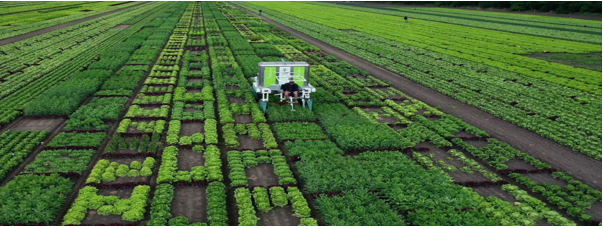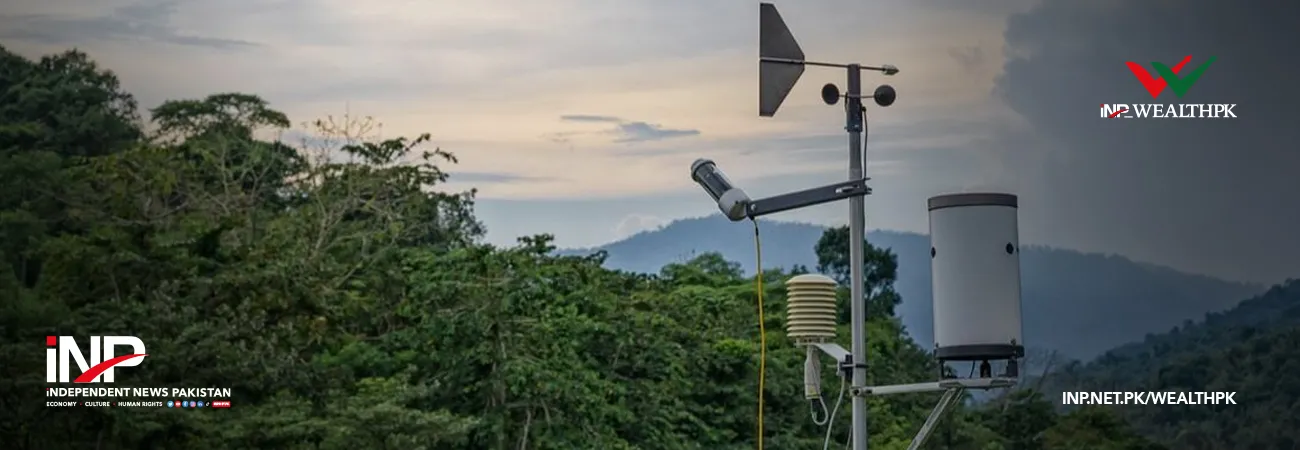INP-WealthPk
Qudsia Bano
Pakistan’s agriculture sector witnessed a marked slowdown in fiscal year 2024-25 as unfavorable weather, higher input costs, and uncertainty in policy measures combined to pull down growth to one of its lowest levels in recent years. According to the State Bank of Pakistan’s Annual Report 2024-25, the agriculture sector grew by only 1.5 percent compared with 6.4 percent in the previous year, making it the weakest-performing segment of the economy.

The decline in growth was primarily due to a broad-based fall in yields and lower area under cultivation, except for sugarcane and rice. The report said that subdued crop prices in FY24 and rising input costs during FY25 squeezed farmers’ incomes, leading to lower use of fertilizers and other inputs. It added that unfavorable climatic conditions, erratic rainfall during the Kharif season, prolonged dry spells in the Rabi season, canal water shortages and above-average temperatures prevented timely sowing of important crops, particularly wheat, cotton and rice.
The situation was aggravated by continued shortages of certified seeds for important crops, except rice, which forced farmers to use low-quality seeds and contributed to the decline in yields. In addition, many farmers shifted from sowing cotton and wheat to other competing crops, including oilseeds, pulses and fresh vegetables, due to uncertainty about the minimum support price. This shift increased the output of secondary crops and partly offset the impact of the fall in important crops, while livestock production also rose during the year, providing some support to agricultural value addition.
The report explained that the reduced use of key inputs such as fertilizer reflected both higher costs and lower incomes. Fertilizer off-take declined sharply as international prices remained elevated, and energy and transport costs added further pressure. At the same time, water availability remained a persistent challenge as irrigation flows were below average. The uneven rainfall distribution particularly affected Sindh and southern Punjab, where moisture stress reduced wheat and cotton productivity.
The State Bank noted that these adverse factors outweighed the benefits of better performance in rice and sugarcane production. The area under rice cultivation expanded because of strong international prices and better returns for farmers, while sugarcane output benefited from favorable weather in certain districts. The report observed that the performance of the agriculture sector was critical for Pakistan’s overall growth trajectory, given its linkages with industry and services.
The decline in output of important crops, especially cotton, added to import requirements as raw cotton alone accounted for nearly one-third of the increase in the import bill during FY25. The weakness in agriculture also indirectly affected large-scale manufacturing as reduced supply of domestic raw materials constrained production in textile and food-processing industries. The SBP said that the slowdown in agriculture reduced rural purchasing power and weighed on domestic demand, while subdued farm incomes also limited household savings and investment.
The central bank emphasized that the sector’s vulnerability to climate shocks and structural inefficiencies requires immediate policy attention. It said that in addition to improving the availability of certified seeds and modern irrigation facilities, there was a need to establish market-based mechanisms to replace the current dependence on government procurement and minimum support prices. It called for the development of wholesale markets to eliminate the exploitation of farmers by middlemen and to ensure efficient market-based trading of agricultural commodities.
It added that both import and export of agricultural goods should be deregulated to create a competitive environment and promote better price discovery. The report also pointed out that reforms in agriculture could help attract much-needed investment, particularly for developing climate-resistant, high-yielding crop varieties. It said that the productivity losses in wheat, cotton and rice underscore the importance of research and innovation in crop science as well as the timely dissemination of weather information to farmers.
The report further mentioned that Pakistan’s agriculture continues to face constraints from low financial inclusion, limited mechanization and weak extension services. High youth dependency, large informal rural employment and insufficient access to formal credit have restricted modernization and kept productivity low. Persistently large fiscal deficits and limited fiscal space for development spending have also undermined public investment in agriculture infrastructure, research and extension.
The State Bank said that while the government’s development spending in FY25 increased for the first time in two years, most of it was directed towards construction and transport projects rather than agriculture. It warned that without reprioritizing spending and strengthening coordination between federal and provincial tiers, Pakistan risks recurring cycles of food inflation and import dependence.
In its policy recommendations, the SBP highlighted that efficient management of irrigation water could mitigate some of the repercussions of climate change for agricultural productivity. It suggested that the ongoing reforms in commodity markets, including the discontinuation of the minimum support price and procurement regime, should be supplemented by improved storage and logistics networks.
The report said that the adoption of climate-resilient farming practices, water-efficient technologies and high-quality inputs was essential to unlock the sector’s potential. It also noted that the expansion of credit to agriculture, including smallholder financing and value-chain lending, could improve access to inputs and mechanization.
The report concluded that Pakistan’s agriculture sector continues to demonstrate resilience through diversification and livestock growth, but its long-term sustainability will depend on the country’s ability to adapt to climate realities and strengthen the policy framework governing farming and irrigation. It warned that unless structural reforms are implemented to address inefficiencies in production and marketing, Pakistan’s food system would remain vulnerable to external shocks, import dependence and inflationary pressures.
Credit: INP-WealthPk













